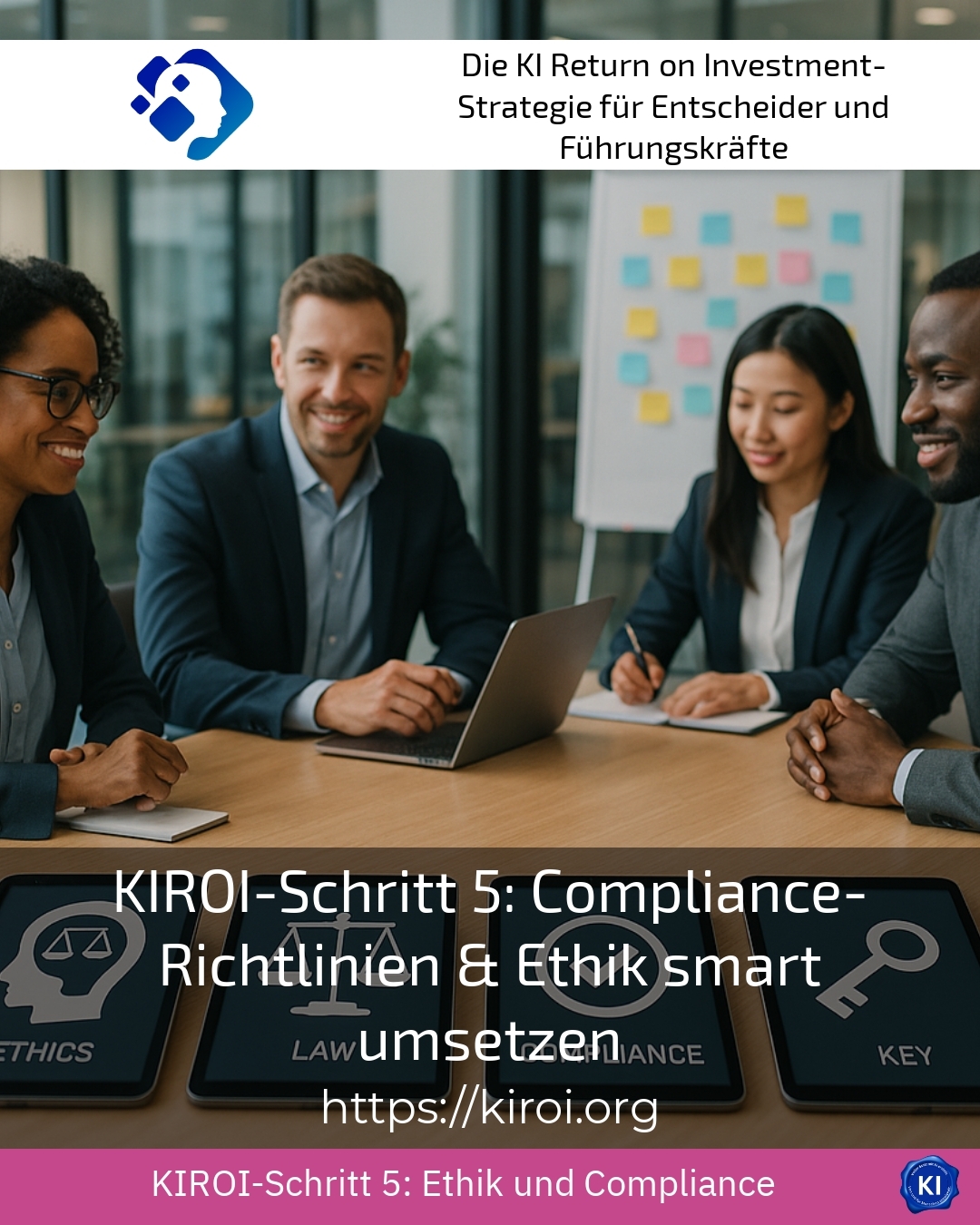Compliance guidelines play a central role when it comes to efficiently implementing legal requirements and ethical principles in companies. When integrating compliance into company processes, it is not only formal steps that are crucial, but also practical support and continuous adaptation. In the context of the fifth step of a successful procedure, the focus is on the intelligent implementation of compliance guidelines & ethics in order to achieve a sustainable effect.
Implement compliance guidelines strategically and practically
The introduction of compliance guidelines requires a considered, strategic approach. Various companies report that simply filing documents without accompanying measures often has little effect. It is helpful to analyse the existing structures and risk areas in detail and derive tailored guidelines from this. For example, financial service providers often rely on specific data protection regulations, whereas in industry, the focus is primarily on occupational safety and environmental protection.
One manufacturing company reported that targeted compliance workshops have increasingly sensitised employees to why it is important to adhere to environmental guidelines, for example. In the IT sector, compliance guidelines on data security are essential to ensure that customer data remains protected and regulatory requirements are met.
In retail companies, on the other hand, training to prevent money laundering and corruption is part of the basic compliance programme. Continuous, interactive knowledge transfer is essential to promote awareness and active cooperation.
Practical examples from different industries
- Compliance guidelines for environmental protection and occupational safety were integrated into the daily work routine of a medium-sized chemical company. As a result, accidents were reduced and environmental damage avoided.
- A software company implemented a compliance management system focussing on IT security and data protection. Regular audits and feedback rounds strengthened compliance by employees.
- A retail company introduced mandatory training on anti-corruption regulations. Practical case studies helped employees to recognise suspicious situations at an early stage.
Keeping compliance guidelines alive through communication and training
Compliance guidelines are only effective if they are understood and practised by all employees. An open communication culture helps to clarify uncertainties and establish compliance as an integral part of corporate ethics.
Companies from the healthcare sector report that regular workshops help to make complex legal requirements on patient safety more transparent. An anonymous whistleblower system also promotes confidence in reporting any breaches that may occur without having to fear professional disadvantages.
Transparent communication is also very important in the construction industry. Clear guidelines and mutual feedback have significantly improved compliance with health and safety guidelines.
Technological tools such as e-learning platforms also enable flexible and scalable training, which often goes beyond pure face-to-face events and thus addresses different types of learners.
BEST PRACTICE with one customer (name hidden due to NDA contract) In an international logistics company, compliance guidelines on data protection and occupational safety were bundled in a digital management system. Employees received regular training via a modular e-learning platform. The transparent documentation promoted rapid adaptation to legal changes and permanently increased compliance awareness.
Monitoring and adjustment of compliance guidelines
Regular reviews are necessary to ensure the effectiveness of compliance guidelines. Internal and external audits help to uncover weaknesses and close compliance gaps. This enables a company to react quickly to changes in the law or the industry.
In the financial sector, for example, controls are an elementary component in minimising risks such as money laundering. A company in the pharmaceutical industry carries out half-yearly audits to recognise and rectify deviations in compliance with quality standards at an early stage.
Small and medium-sized companies also benefit from such a proactive approach by reducing legal risks and strengthening the trust of customers and partners.
Designing compliance guidelines responsibly and ethically
In addition to pure legal conformity, the ethical dimension is playing an increasingly important role in the implementation of compliance guidelines. In addition to regulations on occupational safety, data protection and the environment, values such as integrity, fairness and transparency need to be promoted.
In the automotive industry, some manufacturers are strongly committed to sustainable supply chains and responsible procurement. At the same time, they set clear compliance requirements to avoid corruption and conflicts of interest.
Awareness of such ethical aspects is also growing among service providers in the consulting and IT sectors, where responsible data processing and fair business practices are important.
Those who implement compliance guidelines not only create legal certainty. They support a sustainable and ethical corporate culture that builds trust.
My analysis
The intelligent implementation of compliance guidelines is a complex task that requires strategic planning, ongoing training, open communication and regular monitoring. This is the only way to permanently anchor both legal requirements and ethical standards. A wide range of examples from production, services and trade show that accompanying advice and a pragmatic approach are crucial to keeping compliance alive in day-to-day business. This minimises risks, strengthens the trust of all stakeholders and supports responsible business practices.
Further links from the text above:
[1] Compliance: Definition and importance for companies - Haufe
[2] How to implement compliance guidelines effectively - DataGuard
[3] Definition: Compliance guidelines - Navan
[4] Group Guidelines & Compliance - Adaptation to new ...
[5] Compliance: definition, tasks, guidelines - Personio
[6] Compliance in the company: Basics, meaning and ...
[7] Compliance guidelines - Company nts
[8] Introducing compliance rules and guidelines in the company - Haufe
[9] Compliance rules: The top 5 guidelines for every organisation - Sage
[10] Compliance guidelines - every company should have these 6 ...
For more information and if you have any questions, please contact Contact us or read more blog posts on the topic Artificial intelligence here.















